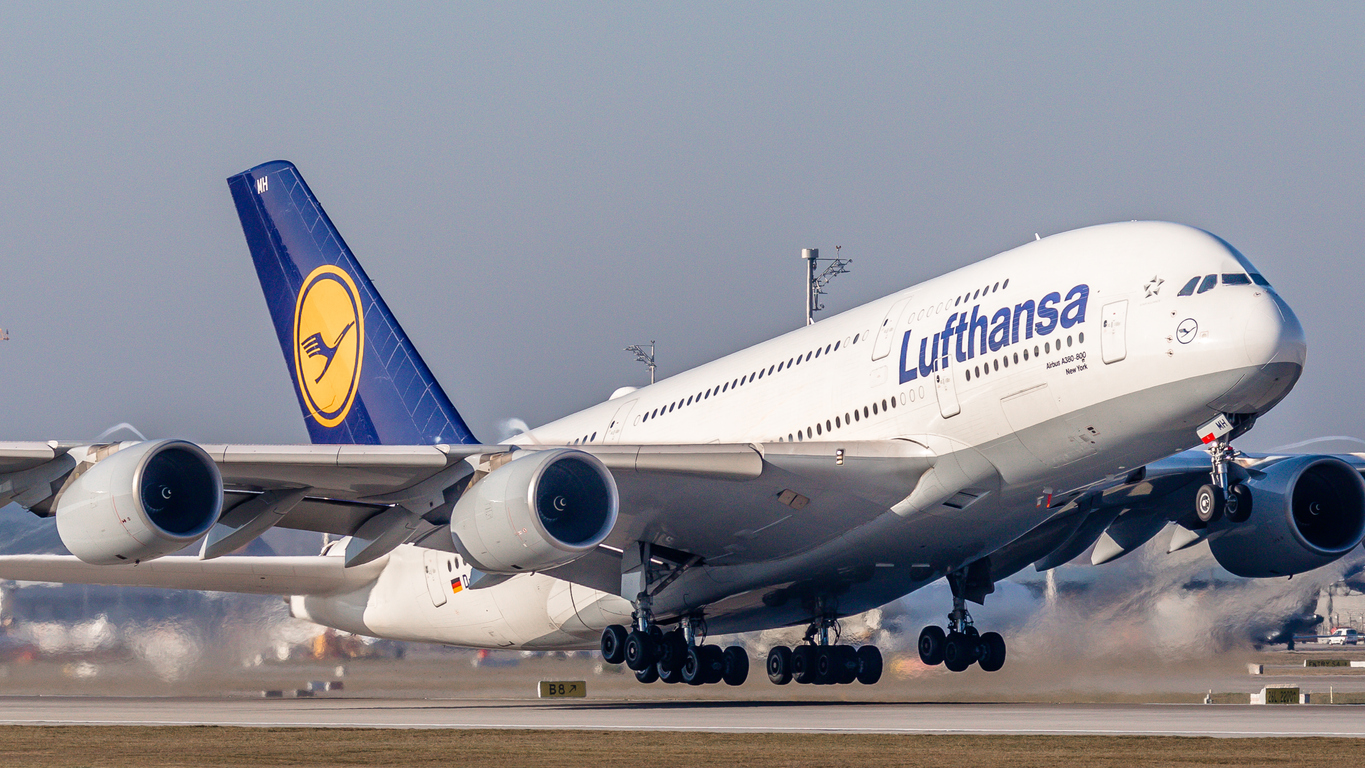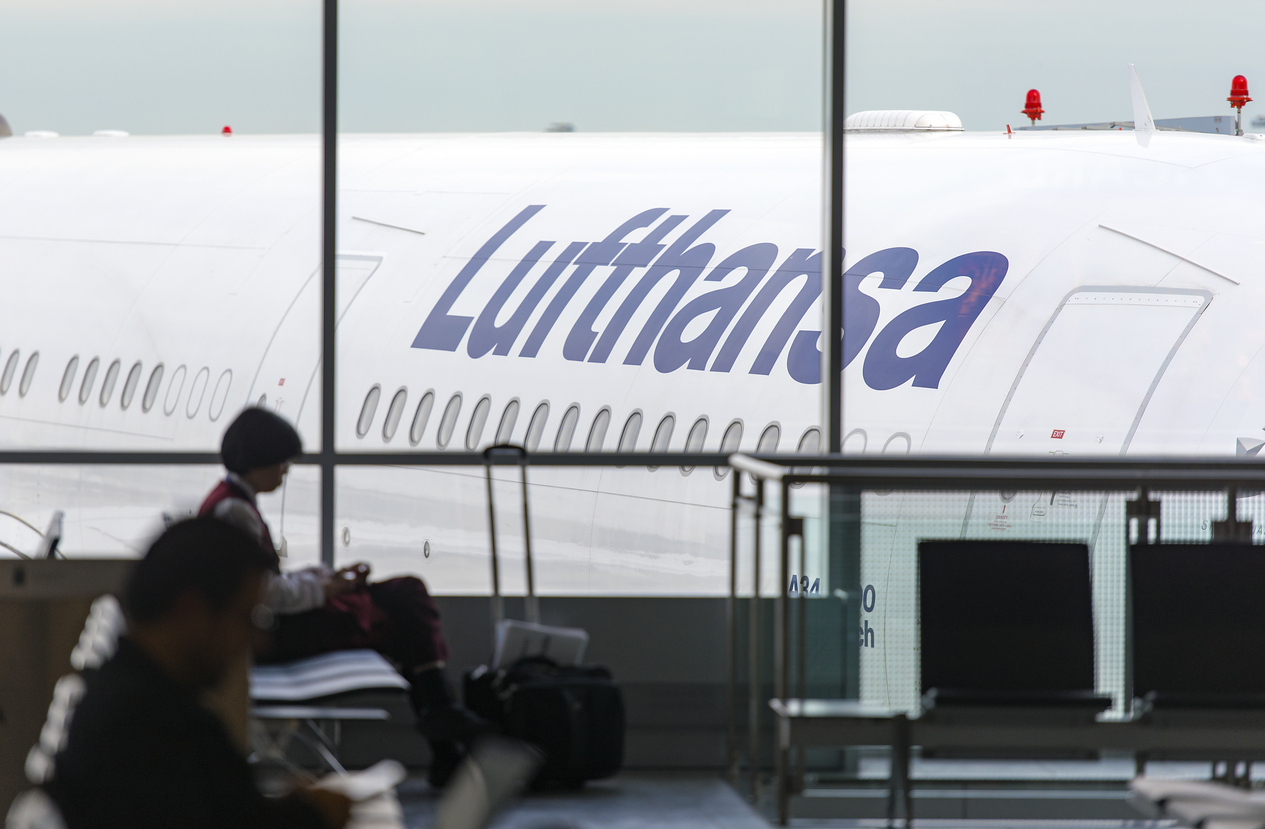
Q1. What has Luthfansa done over the past 5 years to improve fuel efficiency and reduce emissions?
1. Fleet Modernisation
• Lufthansa has made significant investments in modernising its fleet, aiming to replace older aircraft with more fuel-efficient models.
• Over the next few years, they plan to introduce more than 190 new aircraft, including the latest Airbus A320neo and Boeing 787.
• These new planes are expected to reduce fuel consumption and CO₂ emissions by up to 30% compared to their predecessors.
Click HERE and HERE for more information.
2. Sustainable Aviation Fuels (SAF)
• Lufthansa has been a pioneer in the use of Sustainable Aviation Fuels (SAF), which can reduce lifecycle carbon emissions by up to 80%.
• They have been one of the largest purchasers of SAF in Europe and have committed to increasing its use significantly.
• Lufthansa is involved in multiple projects to develop and scale up SAF production, including partnerships with companies like Synhelion for solar aviation fuel and initiatives to produce Power-to-Liquid fuels.
Click HERE and HERE for more information.
3. AeroSHARK Technology
• To further enhance fuel efficiency, Lufthansa has introduced AeroSHARK technology.
• This involves applying a thin, bionic film to the aircraft’s outer skin to optimise airflow, thereby reducing fuel consumption and emissions.
• This innovative approach is part of their broader strategy to increase the ecological and economic efficiency of their fleet.
Click HERE for more information.
4. In-Flight Waste Reduction
• Lufthansa has also focused on reducing in-flight waste and single-use plastics.
• They have redesigned their onboard products to use sustainable materials, such as
• PaperWise, which is made from agricultural waste and produced with renewable energy. These efforts aim to minimise the environmental impact of in-flight services.
Click HERE for more information.
5. Carbon Offsetting and Digital Solutions
• In 2019, Lufthansa launched Compensaid, a digital platform that allows passengers to track and offset their carbon footprint.
• This platform enables customers to invest in SAF and certified climate protection projects, making it easier for travellers to contribute to reducing aviation’s environmental impact.
• Lufthansa has integrated this option into their booking process, promoting more sustainable travel choices.
Click HERE for more information.
Through these comprehensive efforts, Lufthansa is leading the aviation industry towards a more sustainable future, demonstrating a strong commitment to reducing its environmental footprint while maintaining high standards of efficiency and innovation.
Q2. What sustainable fuels are being burned by Lufthansa?
At Language Xchange School, we emphasize the importance of global awareness and sustainability in our curriculum. Today, we're excited to discuss Lufthansa's commitment to reduce carbon emissions through the use of sustainable aviation fuels (SAFs).
What are Sustainable Aviation Fuels (SAFs)
Sustainable Aviation Fuels are biofuels designed for use in aircraft that can significantly reduce the carbon footprint of air travel. These fuels are made from renewable resources and have the potential to reduce greenhouse gas emissions by up to 80% compared to conventional jet fuel.
Lufthansa’s Use of SAFs
Lufthansa is a pioneer in the adoption and promotion of SAFs within the aviation industry. Here’s a detailed look at the types of sustainable fuels used by Lufthansa:
1. Bio-based SAFs
• Lufthansa uses bio-based SAFs derived from biomass.
• These biofuels are produced from a variety of organic materials, including:
Used Cooking Oils and Animal Fats: These are waste products that are processed and refined into jet fuel.
Plant Oils: Oils from non-food crops are converted into SAFs through processes like hydro processing.
Agricultural Residues: Leftover plant materials from agricultural processes can be transformed into sustainable fuels.
Click HERE for more information.
2. Synthetic SAFs
Lufthansa is also exploring synthetic SAFs, which are produced through chemical processes using renewable energy sources. One notable method is the Power-to-Liquid (PtL)process.
Power-to-Liquid: This technology involves using renewable electricity to produce hydrogen, which is then combined with CO2 to create synthetic fuel. The CO2 can be captured from the air, making the process carbon-neutral.
Click HERE for more information.
3. E-Fuels
• E-fuels are another innovative type of SAF that Lufthansa is investing in.
• E-fuels are produced by combining hydrogen (produced via electrolysis using renewable energy) with CO2, resulting in a synthetic fuel that can replace conventional jet fuel.
• This method ensures a closed carbon cycle, significantly reducing overall emissions.
Click HERE for more information.
Lufthansa’s Initiatives and Collaborations
Lufthansa is actively involved in several initiatives to promote the use of SAFs:
Partnerships with Fuel Producers: Lufthansa collaborates with leading SAF producers to secure a steady supply of sustainable fuels for its fleet.
Click HERE for more information.
Research and Development: Lufthansa invests in R&D to improve the efficiency and scalability of SAF production.
Click HERE for more information.
Government and Industry Alliances: Lufthansa works with government bodies and industry alliances to advocate for policies and incentives that support the adoption of SAFs.
Impact on Carbon Emissions
• By integrating SAFs into its operations, Lufthansa aims to achieve significant reductions in its carbon footprint.
• The use of SAFs is a critical component of Lufthansa's broader sustainability strategy, which also includes fleet modernisation, operational efficiency improvements, and an enhanced carbon offset programme.
Click HERE for more information.

Q3. What recycling efforts are being carried out by Ryanair as part of their carbon offset programme
Lufthansa’s Recycling Efforts in Carbon Offset Programme
At our school, we not only focus on teaching languages but also emphasise global awareness and environmental stewardship. One inspiring example we often discuss in our classes is Lufthansa’s innovative recycling efforts as part of their comprehensive carbon offset programme.
Lufthansa’s Commitment to Sustainability
Lufthansa, one of the world’s leading airlines, is at the forefront of sustainable aviation. Recognising the environmental impact of air travel, Lufthansa has implemented a multifaceted approach to reduce its carbon footprint, and recycling plays a pivotal role in this strategy.
Recycling Initiatives
• Lufthansa’s recycling initiatives are extensive and designed to minimise waste throughout their operations. Here are some key aspects:
1. Onboard Recycling:
• Lufthansa has established a robust system for recycling materials used during flights.
• This includes segregating waste such as paper, plastic, and metal, which are then processed appropriately after landing.
Click HERE and HERE for more information.
2. Catering Waste Management:
• The airline works close with its catering services to reduce food waste and recycle packaging materials.
• Efforts are made to use biodegradable or recyclable materials in their meal services.
Click HERE for more information.
3. Aircraft Decommissioning:
• When it comes to retiring aircraft, Lufthansa follows an environmentally responsible approach.
• They dismantle old planes in a way that maximises the recycling of parts and materials, ensuring minimal waste.
Click HERE for more information.
4. Office and Ground Operations:
• Beyond the skies, Lufthansa’s ground operations are also focused on recycling.
• Their offices and maintenance facilities adhere to strict recycling protocols, from paper and electronic waste to industrial materials.
Click HERE for more information.
Carbon Offset Programme
Lufthansa’s recycling efforts are part of a broader carbon offset programme aimed at mitigating the environmental impact of air travel. This programme includes:
1. Investing in Renewable Energy Projects:
• Lufthansa invests in renewable energy projects around the world, helping to offset the carbon emissions from their flights.
Click HERE for more information.
2. Supporting Reforestation:
• By supporting global reforestation projects, Lufthansa contributes to the absorption of CO2 from the atmosphere.
Click HERE for more information.
3. Passenger Participation:
• Passengers are encouraged to participate in the offset programme by contributing to offset their own flight emissions through donations that support environmental projects.
Click HERE and HERE for more information.
Q4. What is Ryanair’s Sustainability and Carbon Reduction Plan for the next 5 years?
Lufthansa’s 2-5 Year Plan on Sustainability and Carbon Reductions
At Language Xchange School, we strive to incorporate real-world examples into our curriculum, providing our students with a broader understanding of global issues. Today, we’re excited to share insights into Lufthansa’s ambitious 2-5 yearplan for sustainability and carbon reductions, a topic that highlights the intersection of language learning and environmental awareness.
Lufthansa’s Sustainability and Carbon Reduction Plan
Lufthansa, a leader in the aviation industry, has set a remarkable example with its forward-thinking sustainability plan. Over the next 2-5 years, Lufthansa is committed to achieving significant strides in reducing its environmental impact. Here’s an overview of their key initiatives:
1. Fleet Modernisation
• One of the cornerstones of Lufthansa’s sustainability strategy is the modernisation of its fleet.
• By investing in new, fuel-efficient aircraft, the airline aims to reduce carbon emissions significantly.
• These modern planes are not only more fuel-efficient but also quieter and more environmentally friendly.
Click HERE and HERE for more information.
2. Sustainable Aviation Fuels (SAF)
• Lufthansa is at the forefront of adopting sustainable aviation fuels.
• Over the next few years, the airline plans to increase its use of SAF, which can reduce carbon emissions by up to 80% compared to conventional jet fuel.
• This initiative is crucial for making air travel more sustainable in the long term.
Click HERE for more information.
3. Enhanced Carbon Offset Programme
• Lufthansa’s carbon offset programme will be expanded and enhanced to offer more robust options for both the airline and its passengers.
• This includes supporting a variety of environmental projects worldwide, such as reforestation and renewable energy initiatives, to offset the carbon footprint of flights.
Click HERE for more information.
4. Operational Efficiency
• Improving operational efficiency is another critical aspect of Lufthansa’s plan.
• The airline is implementing advanced flight planning and air traffic management technologies to reduce fuel consumption and carbon emissions.
• This includes optimising flight routes and improving ground operations to minimise waste and energy use.
Click HERE for more information.
5. Collaboration and Innovation
• Lufthansa is committed to collaborating with industry partners, governments, and research institutions to drive innovation in sustainable aviation.
• This includes participating in international initiatives and research projects aimed at developing new technologies and best practices for reducing aviation’s environmental impact.
Click HERE for more information.
Carbon Offset Program in Thomastown
Starting September 1, 2024, Language Xchange Ireland (LXI) will reimburse schools for the cost of their Airline Carbon Offset program. This initiative encourages clients to consider carbon-neutral travel and sustainability, while neutralizing the additional cost for schools. EU schools can benefit from this ‘Green Travel’ option within the Erasmus Plus Grant arrangement. To participate, schools book their flights, purchase the Carbon Offset from the airline, and send proof to the LXI office. The Carbon Offset Airline Fee will then be reimbursed in the final invoice for the program in Ireland with LXI. This effort supports the local environment and helps offset everyone’s carbon footprint.
Educational Integration at Language Xchange School
At our school, we integrate these real-world sustainability efforts into our language learning modules. Discussing Lufthansa’s plans provides our students with a deeper understanding of environmental issues, enriching their learning experience and fostering global awareness.
Join us in exploring how companies like Lufthansa are leading the way in sustainability while improving your language skills. At Language Xchange School, we believe in learning that transcends borders and makes a positive impact on the world.
'Carbon neutral = carbon cost neutral!'
If you would like to hear more about our thoughts on sustainability click HERE to see our sustainability news feed!